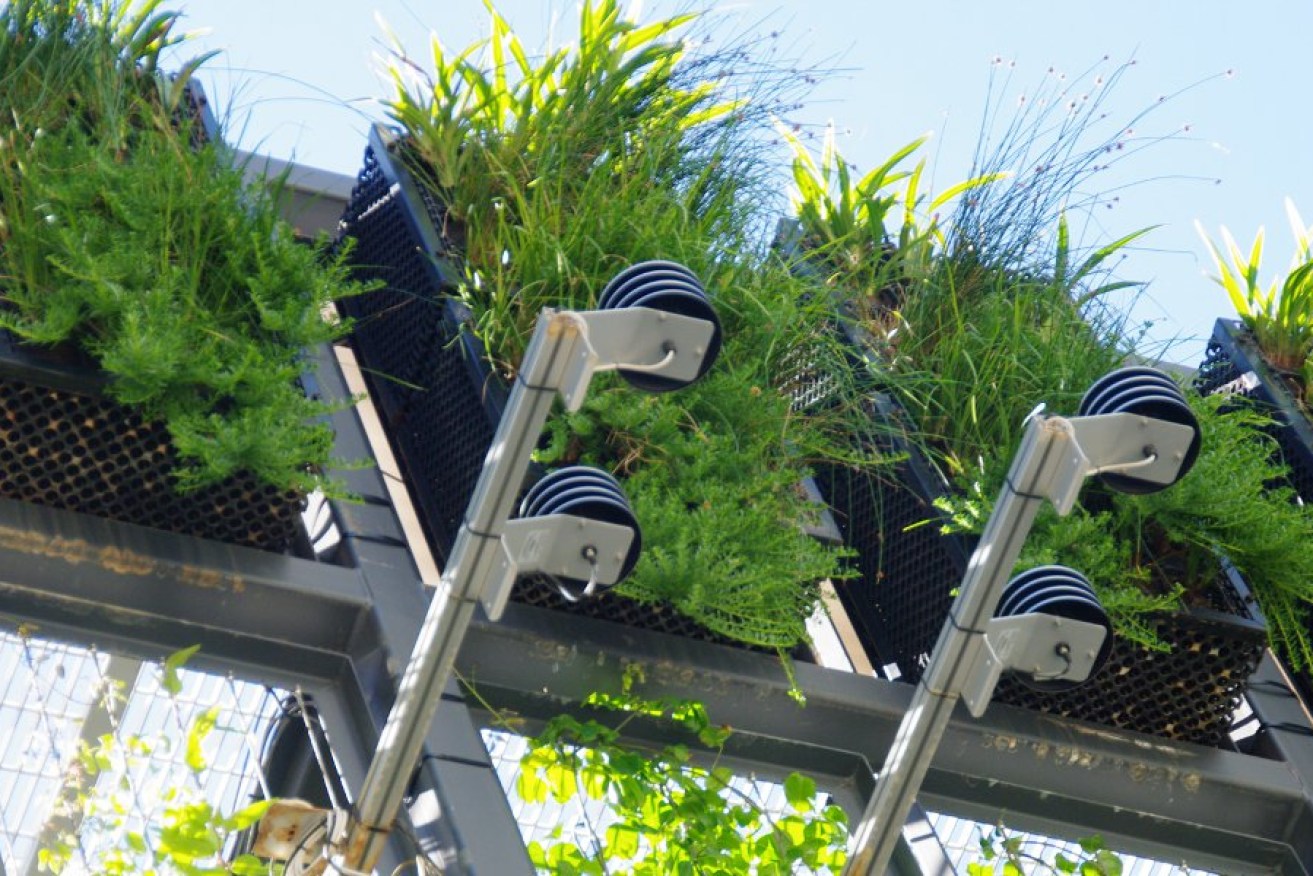Wall breathes life into office building

Native plants provide insulation to keep the office cool in summer and warmer in winter.
One local architecture firm is trying to change the way we heat and cool buildings – one vertical stack of planter boxes at a time.
Fifth Creek Studio’s Graeme Hopkins and Christine Goodwin claim their Living Wall, which overlaps the northern face of Franklin Street’s recently completed Tower 8, can significantly reduce the amount of energy needed to regulate internal temperatures.
Following a 12 month trial on a neighbouring building, Hopkins and Goodwin said the wall reduced the heat into the building by 35 per cent over summer – shaving an average of eight degrees Celsius off the internal temperature, while in winter the wall provided insulation to retain heat in the building.
The wall, which went up on Tower 8 in October, consists of a series of planter boxes filled with native and exotic plants arrayed across a black steel matrix.
The superstructure juts out about a meter from the façade, and covers most of the wall.
“We took the current practice of a second layer to a building facade, an environment layer, and by removing the outer layer of glass or louvres and replacing this with living plants, we could create a frame or platform to support the living wall that would offer more benefits than a glass layer can,” Hopkins told InDaily DESIGN.
“This living wall system is more than just a living wall, but can become an integral part of the energy and maintenance services for the building.”
The plants which include the Hardenbergia violacea – a native climbing plant with purple flowers, Pandorea pandorana – commonly known as the Wonga Wonga vine, and Isolepis nodosa – a fast growing native grass, are fitted into “geotextile” bags filled with soil.
The plants then fit into the planter boxes, and are given time to establish a root system before the whole lattice is hauled up onto a wall.
The plants absorb heat and sunlight which would normally fall on the exterior façade, dramatically reducing heat transfer into the building – and thus reducing cooling bills.
Fifth Creek’s wall started out as a demonstration project, originally installed next door behind the GPO building. After the project proved a success, reducing heat and carbon dioxide levels, the decision was made to permanently install it on Tower 8.
The spaced-out matrix of planter boxes lets softened and dappled sunlight filter through onto the windows of Tower 8, rather than harsh glare and heat.
“The climbing wires allow filtered light through into the building, while the solid planting modules block any light penetration and provide a greater degree of shading and cooling.”
In the blooming of the Living Wall, the Fifth Creek team see the birth of a new way to stitch the urban fabric of the cities of the future.
In addition to the sustainability benefits of reducing carbon dioxide, Hopkins says the steel matrix of the living wall can double as a scaffold during the construction phase of a project.
Hopkins said the construction market wasn’t in a shape where builders were willing to take risks at the moment – but in 10 years, he hoped the new approach would start to filter through into the building industry.




